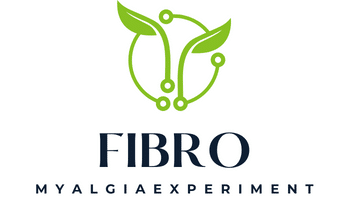When you notice unusual symptoms in your pet, such as regurgitation or difficulty in swallowing, it’s natural to be concerned. If a veterinary diagnosis has confirmed that your dog suffers from megaesophagus, a condition where the esophagus enlarges and fails to push food to the stomach efficiently, you may be left feeling confused, worried, and perhaps wondering how best to care for your dog. Adapting to the new reality for your pet can be challenging, but with the right approach, you can manage this disease effectively. This article offers practical guidance on formulating an effective feeding strategy to assist your dog with megaesophagus.
Understanding Megaesophagus
Before delving into the details of creating an effective feeding plan for dogs with megaesophagus, it’s crucial to understand the disease’s basics.
A lire aussi : How to Choose the Right Nutritional Supplements for a Dog with Hip Dysplasia?
Megaesophagus is a medical condition in which the esophagus, the tube connecting the mouth and stomach, becomes enlarged, losing its muscle tone. Consequently, the esophagus fails to propel the food into the stomach, leading to food being trapped in the esophagus. This can cause frequent regurgitation, weight loss, and even life-threatening complications such as aspiration pneumonia.
While this disease is not exclusive to dogs and can affect other pets like cats, it is more common in dogs. It’s critical to remember that this is not a death sentence for your furry friend. With proper care and a well-designed feeding strategy, dogs with megaesophagus can live relatively normal, happy lives.
A lire en complément : How to Develop a Positive Training Schedule for a Night-Shift Worker’s Dog?
Symptoms and Veterinary Care
Recognizing the signs of megaesophagus can help in early detection, leading to prompt treatment.
The most common symptom in dogs with megaesophagus is regurgitation, which is different from vomiting. Regurgitation involves undigested food or water being expelled from the esophagus, usually shortly after eating. Other symptoms include loss of appetite, difficulty swallowing, excessive drooling, and weight loss.
A veterinary diagnosis is crucial in confirming the disease. This will usually involve an X-ray of the chest to visualize the esophagus and possibly other tests to rule out underlying causes. Remember, timely veterinary care is critical in managing this disease and preventing complications such as aspiration pneumonia, a condition where food or water enters the lungs.
Formulating a Feeding Strategy
The most important aspect of caring for a dog with megaesophagus is designing an appropriate feeding strategy. This can aid in ensuring the food reaches the stomach, reducing regurgitation, and preventing aspiration pneumonia.
Firstly, the type of food given to the dog plays a significant role. Dogs with megaesophagus often find it easier to swallow and digest liquid or semi-liquid foods. Therefore, it might necessitate changing your pet’s diet to more water-based foods or blending regular dog food with water to create a slurried consistency.
Secondly, feeding position matters. Dogs with megaesophagus benefit from a vertical feeding position, as it helps gravity move the food down the esophagus to the stomach. You can achieve this by using specialized elevated feeding bowls or a Bailey Chair, designed explicitly for dogs with this condition.
Consistency and timing of feeding are also essential. Smaller, frequent meals several times a day can help manage the condition better than one or two large meals.
Monitoring and Ongoing Care
Even with a proper feeding strategy in place, monitoring your pet’s condition and providing ongoing care is paramount.
Keep a close eye on their weight, as weight loss can be a sign of a worsening condition. Also, monitor for signs of aspiration pneumonia, such as coughing, fever, and lethargy. If such symptoms occur, seek veterinary help immediately.
While we’ve focused on food, don’t forget about water. Dogs with megaesophagus can also struggle with drinking water. Using a raised water bowl can help, but in severe cases, you may need to provide hydration through other means such as water-rich foods or subcutaneous fluids. Your vet can guide you on the best approach.
Living with a pet that has megaesophagus requires dedication and time. But with the right strategy, you can give your furry friend a good quality of life, full of love and care.
Adapting to Unseen Challenges
Adapting to life with a pet suffering from megaesophagus can be a challenging process. However, the right steps can ease this transition, ensuring your four-legged friend continues to enjoy a high quality of life.
One of the unforeseen challenges can be the occurrence of other diseases like myasthenia gravis and Cushing syndrome in dogs with megaesophagus. These disorders can complicate the feeding process even further, necessitating the need for additional care and veterinary supervision. Myasthenia gravis, for example, can cause muscle weakness in the esophagus, worsening the symptoms of megaesophagus. In contrast, Cushing syndrome can lead to increased appetite, potentially increasing the risk of aspiration pneumonia due to overeating.
Another unforeseen challenge can be the development of an infection in dogs due to food getting stuck in the esophagus. This is why a careful and consistent feeding strategy is essential. It might also be necessary to consider a feeding tube if your dog struggles too much with regular feeding methods.
For dogs that are not responding well to the feeding strategies, a Bailey chair can be a useful tool. This chair is designed to keep dogs upright during and after eating, encouraging the food to move down the esophagus into the stomach.
In some cases, certain types of canned food can be easier for dogs with megaesophagus to eat. It’s always best to consult with your vet to determine the best diet for your specific dog’s needs.
Conclusion: Ensuring the Best Quality of Life
While dealing with megaesophagus can be a daunting task, it is essential to remember that with the right care, your dog can lead a full, happy life. A key component to this is regularly monitoring the disease and adjusting the care strategy as necessary.
Continue to look for changes in your dog’s behavior or health. A sudden increase in regurgitation, weight loss, or signs of aspiration pneumonia are possible indicators that the disease may be progressing, and you should seek immediate veterinary care.
It is also crucial to keep in mind that your dog may require more care and attention than a healthy dog. Daily activities, such as feeding, will likely take more time and dedication. Despite these challenges, your commitment to your pet’s care can significantly impact their quality of life.
Remember, your dog’s diagnosis of megaesophagus is not a death sentence. With the right care, including a well-thought-out feeding strategy, regular vet visits, and ongoing monitoring, your dog can lead a long, fulfilling life. Your love, patience, and dedication can make a world of difference to your beloved pet.






